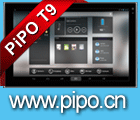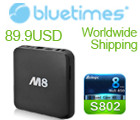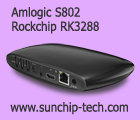I have arrived here in Santa Clara California, just a few kilometers from Google’s Mountain View, Yahoo and Cisco are the other side of the street, Apple is in the next city 10 minutes from here. This is the Silicon Valley. Tomorrow starts the ARM Technology Conference here at the Santa Clara convention center. I will be video-blogging perhaps as many as 30 videos during these next few days. Make sure to often refresh my RSS feed during these next few days (starting Tuesday November 9th Pacific Time) and check back for lots of awesome ARM related videos coming up!

Just few days before the rumored Nexus Two and Gingerbread (I may have seen a couple of engineers waving it around a bar in Mountain View just a couple of hours ago..), within a couple weeks from the rumored Chrome OS ARM Powered laptops, TI, Nvidia and others have ARM Cortex-A9 devlopment kits and actual products hitting the market now or soon, the ARM Cortex-A15 was just announced! I expect there will be a lot of fascinating videos to film, demonstrating the products and technologies, interviewing engineers and specialists from ARM and from all the companies making ARM Processors and products!
I want to learn more about the performance of ARM Cortex-A9 for full desktop/laptop computing. Is full web browsing speed going to happen soon? What specific kinds of faster I/O and faster memory designs are required for ARM Powered laptops and desktops to hit mass production and usage by all consumers?
Which are the best ARM Powered tablet platforms? How are they customizing Android for tablets or which other software solutions and hardware acceleration is being worked on?
What is the status of Linaro, is it going to support a software foundation for full desktop/laptop computing on ARM Powered devices? What are going to be the hardware requirements?
Do ARM Powered solutions support full 1080p video decode and encode, at full high bitrates with high profile encodes of most requiring MKV containers with all the required codecs? If so, what’s needed for ARM to power the Google TV? How soon will ARM be usable for Google TV based devices?
What’s up with the next generation of 1080p camcorders, will their encoding qualities be increased (better encoding quality at lower bitrates) and can ARM Powered solutions be used for the most cost effective HD video-conferencing solutions?
How are the ARM chip providers designing those processors? How do they manufacture them? How do they plan to make them faster, smaller, cheaper and better? How long does it take to integrate them in products that can be mass manufactured and sold to consumers?
What would you like me to ask the people representing these ARM related companies during this conference? Post your questions in the comments and I will try to ask them directly to the engineers in charge of all the aspects of the ARM industry! Do you want to ask anything to ARM, Freescale, TI, Samsung, Marvell, Qualcomm and any of the other attendees or exhibitors at this conference? Let me know what I should ask and who I should Interview! You can also let me know what I should film at my email charbax@gmail.com and to my phone number while I am in the USA: +1 (702) 238 8630








